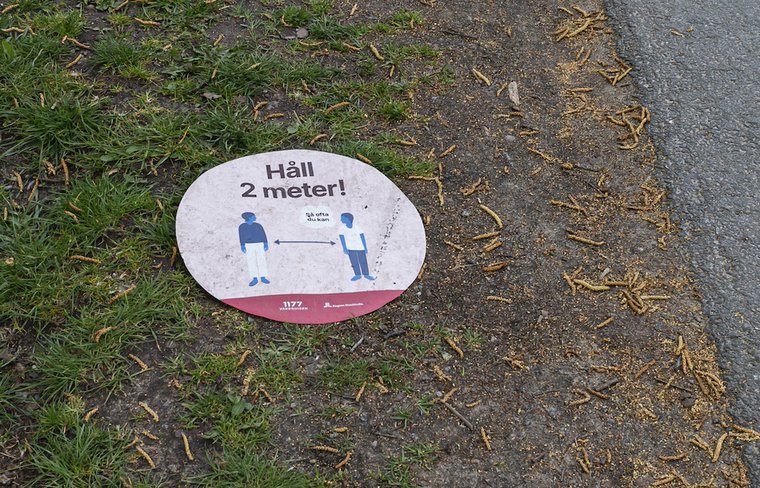Over the past 3 months, a debate has raged over the wisdom of the Swedish approach to the COVID-19 pandemic. Critics of mitigation measures have extolled Sweden, the outlier among European nations for having not implemented stay-at-home measures, reckoning that Sweden’s unique approach will allow it to buck the trend of economic slowdown while avoiding the dramatic suffering from the pandemic that the likes of Italy or Spain have endured.
On the other hand, those advocating the more cautious consensus have rebuked Sweden for what they consider to be a callous disregard for the lives of those who will perish because contagion was not restricted.
Putting aside the Swedish Central Bank’s announcement that Sweden is expected to see an economic downturn equivalent to its neighbours that did implement lockdowns, how can we evaluate the decision of the epidemiologists advising the Swedish Government to allow contagion to spread in the hopes of reaching “herd immunity” before a vaccine becomes available sometime in 2021?
Using the death rate in the overall population as a guiding metric (since the case rate depends upon how extensively a country has tested for the virus, which is obviously far from uniform,) we can see that originally Sweden had fared better than all of the more populous nations of western Europe who implemented lockdowns, with the exception of Germany. But little by little its proportional death toll eclipsed other nations: first Switzerland, then the US, then Ireland, then Netherlands and now even France.
The peak in daily deaths occurred in Sweden on April 22. Those 185 deaths were proportionally about twice as deadly as the worst day in the United States, but lower than the most deadly days in France, Spain, or Belgium. Yet since its peak in the third week of April, Sweden’s curve has not slowed dramatically, meaning that it could even eclipse Italy and Spain if it doesn’t flatten. While this seems shocking, Sweden has not been a stranger to deadly viruses in the past; in 1988, the flu claimed 2,000 Swedish lives, and another 4,500 lives in the 1993-4 winter.
In neighbouring Denmark, which did implement restrictions in early March, the pandemic is essentially over and normal life has almost resumed, while its death toll has not spiked again. Denmark has a bit more than half the population of Sweden, but so far about 1/8 the death toll. If the current trends continue, COVID-19 will be proportionally five or six times less deadly in Denmark than in Sweden.
Advocates of Sweden’s “herd immunity” approach, who argue that a significant enough portion of the population will be exposed to the virus in order to prohibit the spread of new cases, claim that the country will never again have to think about COVID-19. But what of other nations, having limited exposure to their populations, that may have to deal with additional “waves” of infection? A glance at the graph tells us that Denmark, having essentially finished with the first “wave,” would have to go through 4 comparable waves to eclipse Sweden’s death toll. There is virtually zero likelihood of that happening. Ditto for Germany. Switzerland, right on the border of the mayhem of Lombardy, would have to repeat the same crisis to reach Sweden’s level of deadliness. Again, not likely.
While it was premature to politicize a legitimate public health debate and vilify Sweden without a full enough consideration of the data, it is now becoming clear that short-term “lockdown” measures did save lives. The epidemic has run its course and most countries will be back on their feet with only a few months of disruption. By choosing to eschew those measures, Sweden ultimately made a bad choice in balancing public health with economic and social well-being, which has been acknowledged by its chief epidemiologist Anders Tegnell, who now laments his course of action. In particular, the quest for herd immunity resulted in too many infectious carriers, causing disastrous results for those over 80, which accounted for 66.6% of Sweden’s deaths, the highest of any country. Nursing homes were particularly devastated.
Nevertheless, there is a silver lining to Sweden’s failure: in preparing for future pandemics, the high death toll among Swedes has debunked the fallacy that elderly or vulnerable populations can simply be isolated. Opportunities for contagion must be curtailed across the board, and early. COVID-19 has shown us that highly infectious viral pandemics can best be overcome in the manner of Austria, Denmark, and others: short-term measured restrictions that avoid both high death tolls and disastrous economic side effects.






Comments
We encourage anyone to comment, please consult the oD commenting guidelines if you have any questions.